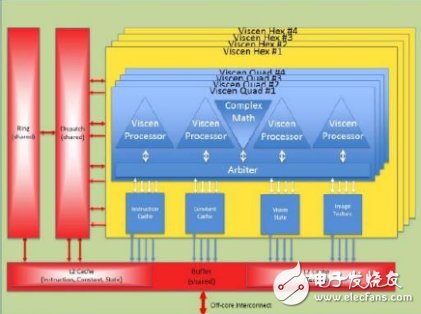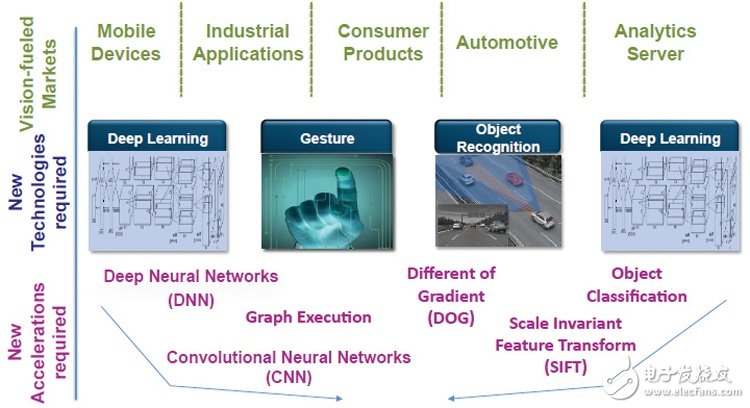When "deep learning" is not only popular, but also close to the "boiling point" of the technology maturity curve, it is not surprising that another wave of startups aiming at deep learning and visual processing has sprung up. .
This time it was a company called ThinCI (pronounced 'Think-Eye'), founded by Dinakar Munagala, a senior engineer/architect from Intel.
Surprisingly, however, this California-based startup is not only rich in capital, but also supported by a large-scale manufacturer with technical expertise, but also offers a unique “massive parallel architecture†that Munagala calls "Special for visual processing and deep learning."
Munagala promises that the chip architecture of the company's current patent application can bring "two orders of magnitude performance improvement" compared to other deep learning/visual processing solutions.
After starting in a garage and spending six years with limited funds, ThinCI made a public appearance last month. The company also recently attracted two large first-tier auto suppliers to become its institutional investors, and a number of large companies with a strong reputation in the technology sector became their private investors.
The two car suppliers are DENSO InternaTIonal America, Inc., and Magna InternaTIonal Inc. Private investors include Din Banatao, chairman of the board of ThinCI and managing partner of Tallwood Venture Capital, former executive vice president of Intel Architecture, Dadi Perlmutter, general manager of BASF, and Jurgen Hambrecht, member of the supervisory board of Daimler and others. A few senior people with strong backgrounds.
Simple and flexibleWhy do they invest in ThinCI? Perlmutter believes that "I have enjoyed simplicity and flexibility throughout my career. I don't like some arrogant methods, but focus on the bottleneck of new computing problems and find ways to overcome bottlenecks by finding new ways. ThinCI That's how it is done."
When other solutions are limited to moving in and out of data, just to fill the "starving" huge computing engine, Perlmutter describes ThinCI computing as a "drawing analysis method tailored for deep learning, saving a lot of Unnecessary memory access procedures."
And what is the final result? "It not only speeds up the instruction cycle, but also reduces cost and power consumption," he added.
Munagala said that since she started six years ago, she has the dream of developing a new chip architecture to meet the needs of next-generation technologies (such as deep learning), so she decided to leave Intel.
However, ThinCI did not disclose the details of its processor architecture, but only called it "a revolutionary graphics stream processor" (Graph Streaming Pocessor). Munagala explains that it refers to "a large-scale parallel architecture designed for multiple computational nodes that simultaneously process task graphs."
Deep learning is essentially based on a set of algorithms that attempt to model high-level abstractions in data through depth mapping with multiple processing layers consisting of linear and nonlinear transactions.
What makes the ThinCI architecture unique is its way of dealing with deep drawing.
Munagala explained, “The ThinCI architecture uses extreme parallelism to stream data for the entire drawing task,†instead of using multiple processing layers to continuously process data through depth mapping.
As Perlmutter said, another key element of the ThinCI processor architecture is programmability. He explained that many people made mistakes in hardware customization for specific scenarios, and the historical lesson is that the problem is constantly changing. Programmers have tremendous creativity, and Perlmutter says that what ThinCI needs is a way to "program the processor to implement new solutions."
Obviously, this is exactly what ThinCI has to offer. Munagala pointed out that designers "both benefit from a unique programming approach while using industry-standard APIs. This simplifies the creation of deep networks optimized for their processors.
Compared to other processors on the market, Munagal uses the GPU as an example. "Although GPUs have been used for deep learning (such as Nvidia), it is not designed for data analysis. It is not efficient in visual processing. And not only high power consumption, but also a lot of memory." The problem with DSP is that programming is inefficient and complicated.
So what about hardwired components? Not feasible! Because for fixed solutions, the algorithms used for deep learning change too fast. The CPU is "only for general purpose" because it is not efficient and consumes too much power.
On-chip drawing executionIn contrast, ThinCI's visual computing engine is unique in that it provides "on-die graph execuTIon". It is designed to accelerate convolutional neural networks (CNN), deep neural networks (DNN) and other complex algorithms. More importantly, the company said that the data from the camera sensor "storage and processing are done on-chip without DRAM access."

Figure 1: ThinCI's Visual Computing Engine (VISCEN) Hardware Architecture Source: ThinCI
Therefore, Munagala believes that ThinCI's visual computing engine delivers higher performance, lower power, programmability, and less memory footprint than other processing architectures.
Of course, some new processors have begun to appear in the visual processing SoC market. E.g. The recent acquisition of Movidius by Intel is a good example. It offers a vision processor designed specifically for the embedded market.
For the architecture currently used in deep learning, Munagala said: "ThinCI's solution is 13 times higher in terms of performance/volume, performance/power pointers." More importantly, "in terms of architecture, Our approach is more forward-looking, and it solves problems that other architectures cannot solve.†He also emphasized the importance of the “simple programming modelâ€.
Favored by first-line auto suppliersLooking at ThinCI from two large first-tier suppliers, it clearly reflects three things: First, the automotive industry has a huge demand for visual processing and deep learning technology (they think they have not seen the whole picture); secondly, let auto Driving is a firm commitment to become a reality; in the end, first-tier manufacturers need to see technical breakthroughs, so that they have enough chips to negotiate with the new gold master.
Just look at the Mobileye/Intel/BMW Alliance announced last July. Obviously, the first-line suppliers are absent.
"DENSO has been researching new developments in computer vision processing, and our investment in ThinCI is a firm belief that ThinCI's technology will soon become a key component of the next generation of automated driving systems - the future of new systems needs advanced Computing technology combined with deep learning capabilities," Tony Cannestra, director of venture capital at DENSO, said in a statement.
Magna Technical Director Swamy Kotagiri also said: "We are very pleased to combine ThinCI's strengths in processing and software, and Magna's overall understanding of automotive systems.
Outside the car marketThinCI does not only focus on the automotive market. After all, progress in the automotive sector has been slow, especially considering all the tests and certifications that must be performed before final production. But this is meaningful for any startup that looks for recent opportunities in other areas.
Munagala explained that visual processing and deep learning applications can be applied anywhere, from natural user interfaces to surveillance cameras and even white goods.
Perlmutter agrees with this view. "Cars are just a type of application for deep learning, but deep learning can accommodate a large number of new types of problems.
He explained, "Creating adaptive solutions for all human-like behaviors, from visual and speech, to optimization algorithms for massive data collection, and complex BOT and assist.
Perlmutter believes that deep learning is very effective, especially when "we move from smart phones to Augmented Reality (AR) devices," he said. "Our interaction with AR devices and the complexity it requires." Offices, manufacturing plants and on the go) will go far beyond the clumsy way of interacting with smartphones today."
Fortunately, ThinCI's advantage in the embedded market is that its visual computing engine is highly scalable. Munagala said: "We can respond to diversified markets in the areas of wearable devices and servers with built-in general software stacks."

Figure 2: Emerging applications require new visual processing technology Source: ThinCI
scheduleAccording to ThinCI, its visual computing engine architecture "has come to an end in 2015 and its test chips have been verified." The company is currently raising funds to implement the first chip production scheduled for launch in 2017. Since the beginning of this year, ThinCI has completed beta testing of its software tool suite.
ThinCI investors are also confident about the results the team has provided. Jurgen Hambrecht, chairman of the BASF Supervisory Board and Daimler's supervisory board, said that because of his "excellent team and ability," he decided to make a personal investment.
Hambrecht is more optimistic, "ThinCI will bring breakthrough hardware software for diverse industrial applications."
Headband Headphones have good sound field and are comfortable to wear, Bluetooth Headband Headphones can avoid scratching the ear canal; the sound quality of high, medium,and bass are very good, have a good sense of hearing even when playing symphony; The midrange effect of the headphones is thick, pop songs' hearing effect is very contagious, music effect is great.
Advantages:
1: Sound field is good, comfortable to wear.
2: No in-ear, avoid scratching the ear canal.
3: longer time to use, compare to in-ear earphone.

Headband Headphones,Wireless Headband Headphones,Headband Earphones,Bluetooth Headband Headphones
Shenzhen Linx Technology Co., Ltd. , https://www.linxheadphone.com